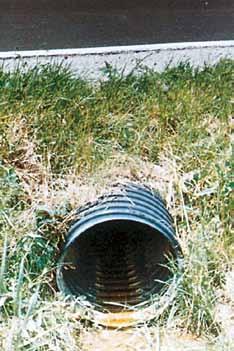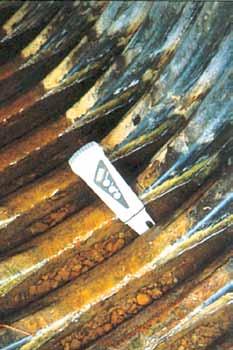
2 minute read
HIGH-DENSITY POLYETHYLENE
Pipe is generally divided into two categories: rigid and flexible . Rigid pipe is commonly defined as a pipe that does not deflect more than 2 percent without structural distress, and as such, it must be designed to carry the majority of the load directly . Examples are concrete, clay, and cast iron . Flexible pipe will accept at least 2 percent deflection without structural distress . Steel, aluminum, and thermoplastics fall into this category . We can further divide flexible pipe into elastic materials, which are metal pipes and viscoelastic, represented by thermoplastic materials .
High density polyethylene drainage pipe has been in use since the 1950s . In this relatively brief period, HDPE has been the subject of exhaustive laboratory tests and field experiments . In real-world installations, the product has built an impressively successful record of trouble-free performance .
Advertisement
Today, we see an accelerating trend among construction engineers to replace steel and concrete piping with polyethylene because of its superior mechanical and chemical properties and cost-effective handling characteristics .
1. structural strength. HDPE's toughness and flexibility enable it to withstand deep fill heights and extended live loads . ADS pipe is engineered to exceed all the AASHTO LRFD structural design requirements for earth and live loads . Tests at Utah State University show that heavy soil loads will fracture the wall of rigid pipe, but under identical conditions, will produce only moderate deflection in flexible polyethylene pipe . HDPE will not crack or break during proper installation, and maintains its impact strength at sub-zero temperatures .

ADDITIONAL INFORMATION AVAILABLE 1. asTM d3350, standard specification for
Polyethylene Plastics Pipe and Fittings Materials 2. ads Tech Note 4.01,
Chemical resistance of Polyethylene and elastomers 3. ads Water Management drainage handbook, durability section 4. "Practical approach to the study of Polyolefin
Weatherability", r.J.
Martinovich and g.r. hill
2. abrasion resistance. The chart to the right indicates that the material loss rate of HDPE is only 15% to 25% that of reinforced concrete under controlled experiments . Decades of in-situ testing and real-world installations have demonstrated polyethylene's interior toughness . It is used successfully with harsh mining and dredging slurries and is virtually immune to damage from even the most aggressive sewer cleaning tools .
3. light weight. Polyethylene weighs 50 to 75% less than comparable steel pipe and is about one-tenth the weight of concrete . This translates into easier handling, smaller work crews, reduced heavy equipment requirements, and improved safety .
4. Chemically inert. HDPE is highly resistant to corrosion and is immune to galvanic and electromechanical reaction . As seen in the diagram to the right, polyethylene can safely be used with soils or effluent with a pH range of 1 .5 to 14 .







